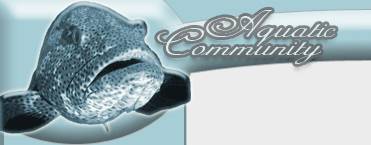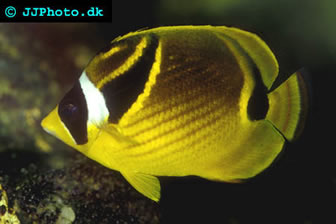Raccoon Butterflyfish
Chaetodon lunula
Chaetodon lunula is known under several different names in English, such as Racoon Butterflyfish, Raccoon Butterfly, Racoon Coralfish, Halfmoon Butteflyfish, Moon Butteflyfish, Moon Butterfly fish, and Redstriped Butterflyfish.
The close relative Chaetodon fasciatus is also referred to as Racoon Butterflyfish, so it is best to use the scientific names in situations where it is important to avoid confusion. In this article, the name Raccoon Butterflyfish is used for Chaetodon lunula only unless otherwise specified.
Chaetodon lunula has not been evaluated for the IUCN Red List of Threatened Species.
Geographical range, habitat and habits
The Racoon Butterflyfish lives in the Indo-Pacific and Southeast Atlantic. Its geographical range stretches from East Africa to Hawaii and the Marquesan and Ducie islands. The northern limit is found south of Japan, while the southern limit is located in the waters of Lord Howe and Rapa Island. In the Southeast Atlantic, the species has been found off East London in South Africa. (The Racoon Butterflyfish Chaetodon lunula is not present in the Red Sea. In the Red Sea, you can instead find the closely related Chaetodon fasciatus which is known under the same common name – Racoon Butterfly.)
The adult Racoon Butterflyfish inhabits shallow reef flats of lagoons and seaward reefs, while the juveniles tend to prefer staying among rocks on inner reef flats and in tide pools. The depth range for this species is 0-30 meters / 0-100 feet.
The Racoon Butterflyfish is chiefly a nocturnal species and is usually found in pairs or small groups.
Size and appearance
The largest scientifically measured Racoon Butterflyfish was 20 cm / 7.9 in.
The fish is called Racoon Butterflyfish since it has black markings around its eyes. Black markings can also be found on various other parts of the body over a yellow base colouration.
Raccoon Butterflyfish care
It is not advisable to keep an adult Racoon Butterflyfish in an aquarium smaller than 75 gallons / 285 litres. A small specimen can do well in a 15 gallon/ 60 litre aquarium, but it will eventually need a larger home. This species do not handle crowding well. The aquarium must contain a lot of suitable hiding spots (e.g. wholes) as well as open areas for swimming.
The Racoon Butterflyfish is generally peaceful and can be kept in a friendly community aquarium. It will however be territorial against other butterflyfish and you will need a very large and cleverly decorated aquarium if you wish to keep them together. You can also reduce the risk of aggressive behaviour by only keeping butterflies of dissimilar size and introduce the smallest first (wait a few weeks between each introduction). In the wild this fish can be seen in groups, but it can be hard to get a group to co-exist in the aquarium unless they have been captured together.
The Raccoon Butterflyfish is generally not considered reef safe, because it likes to pick at corals and eat certain invertebrates.
Keep the pH-value at 8.1-8.4 and the specific gravity within the 1.020-1.025 range (ideally in the upper parts of this range). The recommended water temperature when keeping Raccoon Butterflyfish is 72-78° F / 22-25.5° C. Just like the other butterflyfishes, the Racoon Butterflyfish is sensitive to organic waste and it is therefore recommended for well established aquariums only.
Feeding Raccoon Butterflyfish
In the wild, adult specimens feed primarily on tubeworm tentacles, nudibranchs and other benthic invertebrates, but will also eat algae and coral polyps.
The Racoon Butterflyfish is not a very fussy eater compared to the really pernickety members of the Butteflyfish group. If you despite this find it hard to make your Racoon eat in the aquarium, check the water values and make sure that the set up contains enough hiding spots. Start feeding your Racoon Butterflyfish when the aquarium is dark (this is a nocturnal species) and try to entice it by offering a small anemone. The next step is to provide it with live food, such as brine shrimp and newly opened clams.
One you have managed to make a Raccoon Butterflyfish start eating, it is usually a very happy eater in the aquarium and will give all sorts of new food a try. It is actually quite easy to over-feed this butterfly, so be careful. The fish needs to realise that dead food is actually food, but once this has happened it will typically eat virtually anything, including flake food. Keeping it on dry food only is however not a good idea, since this can weaken the immune system and make the fish loose its vibrant colours. Combining dry foods with live, fresh or frozen meaty foods is much better. You can for instance serve your fish shrimps, clams, and insect larvae. Keep the diet varied! Also remembers that this fish needs some algae in its diet. It is often described as a carnivore species, but it will always ingest algae in the wild and needs to do this in the aquarium as well to stay healthy in the long run.
In the wild, the Raccoon Butterflyfish spends a lot of time searching for food and it can grow bored and apathetic in an aquarium where it is given one or two huge servings of food each day and nothing to occupy itself with in between. It is therefore best to give your fish many small portions of different types of food throughout the day.
Breeding Raccoon Butterflyfish
This is an egg-laying species that will scatter its eggs. Pairs are form during breeding. During spawning, the female fish will release her eggs depending on tidal action and the lunar cycle, and the male will fertilize them in the water before they are swept away by surface currents. The offspring goes through an armoured stage when they are a part of the pelagic planktons of the ocean.
Butterflyfish Articles:
Copperbanded Butterflyfish – Chelmon rostratus
Golden Butterflyfish – Chaetodon semilarvatus
Klien's Butterflyfish – Chaetodon kleinii
Lined Butterflyfish – Chaetodon lineolatus
Longfin Bannerfish – Heniochus acuminatus
Saddleback Butterflyfish – Chaetodon falcula
Schooling Bannerfish – Heniochus diphreutes
Threadfin Butterflyfish – Chaetodon auriga
Yellow Longnose Butterflyfish – Forcipiger flavissimus

